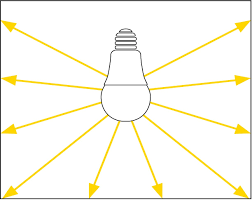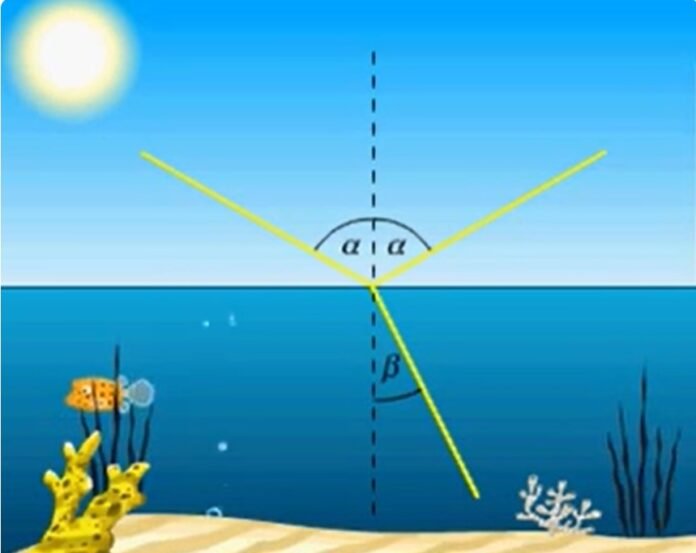Do you know how we perceive the things around us? We have five senses, that help us to interact with the world around us. These are sight, hearing, smell, touch, and taste. Of course, all senses are important but the sense of sight is the most important. Here is an interesting fact. We perceive 80% of the world around us by using the sense of sight. We see objects with our eyes but why don’t we these objects in the dark? If you are curious to know the answer, then you have come to the right place. In this article, we will learn the basic concepts of light and laws governing the light. We will also obtain the relevant mathematical expressions to understand the reflection and refraction of light.
Introduction:
Have you ever thought about why we see objects only in the presence of light but can’t see things in darkness? The answer is light. We are able to see these objects around us because of the light coming from them. There are some objects that can generate their own light. For example, Sun, fluorescent bulbs, and burning candles. The objects that generate their own light are called luminous objects. Most of the objects we come across cannot generate light of their own for example, paper, tables, chairs, walls, etc cannot generate light of their own. Such objects are called non-luminous objects. As we learned just now that we see objects only because of light coming from them. Then how come we are able to see them? We are able to see them because of the reflection of light. These objects reflect the light to our eyes. What light are they reflecting? Where is the light coming from? This light is nothing but a light coming from luminous objects. So we can summarise it like this we are able to see non-luminous objects because of light coming from the luminous objects.![]() During day time we see the blue sky, white clouds, and green grass because the light from the sun is getting reflected by them and is traveling towards our eyes. At night we are able to see the moon because it is reflecting the light from the sun. Note that the moon is nonluminous and it cannot generate its own light.
During day time we see the blue sky, white clouds, and green grass because the light from the sun is getting reflected by them and is traveling towards our eyes. At night we are able to see the moon because it is reflecting the light from the sun. Note that the moon is nonluminous and it cannot generate its own light.
A ray of light:
Before going ahead to learn the laws of reflection we first need to understand in which direction the luminous objects emit the light. The luminous objects emit light in all possible directions. If we show this light by a straight line and an arrow on it then all these arrows will indicate various paths along which the light is traveling. These arrows are what we call ‘rays of light’. Here’s how we define a ray of light. A ray of light is a straight line path along which the light travels.
Incident ray and reflected ray:
Suppose one of the rays from the light of the bulb strikes at a point on the plane surface then this ray is called the incident ray. And the surface reflects this ray in another direction. This ray is called the reflected ray.
The ray of light when strikes a surface gets reflected in a certain direction and this direction is determined by the laws of reflection that every reflected ray obeys. ![]()
Laws of reflection:
The two laws of reflection are
- The angle of incidence is always equal to the angle of reflection.
- The incident ray, the normal at the point of incidence, and the reflected ray all lie in the same plane.
To understand these we first need to know what is the angle of incidence and angle of reflection are. The angle of incidence is the angle made by the incident ray with respect to the normal at the point of incidence. And it is denoted by ‘i’. The angle of reflection is the angle made by the reflected ray with respect to the normal at the point of incidence. And it is denoted by ‘r’.![]() Fig.a. Angle of incidence and angle of reflection
Fig.a. Angle of incidence and angle of reflection
When the incident ray strikes the place at a larger angle of incidence then the reflected ray would also make an equally large angle so that the angle of reflection is equal to the angle of incidence. This is illustrated in fig. b. below.![]() Fig.b. angle of incidence (i) = (r) angle of reflection.
Fig.b. angle of incidence (i) = (r) angle of reflection.
According to the second law of reflection the incident ray, the normal to the point of incidence, and the reflected ray lie in the same plane.
Recommended Articles:
Anemometer – Types and Practical Applications
Anatomy of Human Ear
Amplitude Frequency Period Sound
Ampere’s Law | Definition, Application & Examples
Ampere: The Basics of Electrical Currents
The angle of incidence is the angle made by the incident ray with the normal at the point of incidence. The angle of reflection is the angle made by the reflected ray with the normal to the point of incidence. There are two laws of reflection that every ray of light obeys. These are The angle of incidence is equal to the angle of reflection. The angle of Incidence FAQs
What is the angle of incidence?
What is the angle of reflection?
What are the laws of reflection?
The incident ray, the normal, and the reflected ray lie in the same plane.
